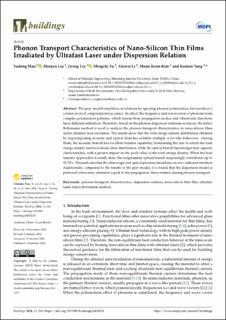| dc.description.abstract | The gray model simplifies calculations by ignoring phonon polarization, but sacrifices a certain level of computational accuracy. In effect, the frequency and wavevector of phonons form complex polarization patterns, which means their propagation modes and vibrational directions have different influences. Therefore, based on the phonon dispersion relations in silicon, the lattice Boltzmann method is used to analyze the phonon transport characteristics in nano-silicon films under ultrafast laser excitation. The results show that the total energy density distribution obtained by superimposing acoustic and optical branches exhibits multiple wave-like behaviors. Among them, the acoustic branch has excellent transfer capability, dominating the rate at which the total energy density reaches a steady state distribution, while the optical branch has stronger heat capacity characteristics, with a greater impact on the peak value of the total energy density. When the heat transfer approaches a steady state, the longitudinal optical branch surprisingly contributes up to 52.73%. This indicates that the often-neglected optical phonons should also receive sufficient attention. Additionally, compared to the results of the gray model, it is found that the dispersion model is preferred when more attention is paid to the propagation characteristics during phonon transport. | en_US |

